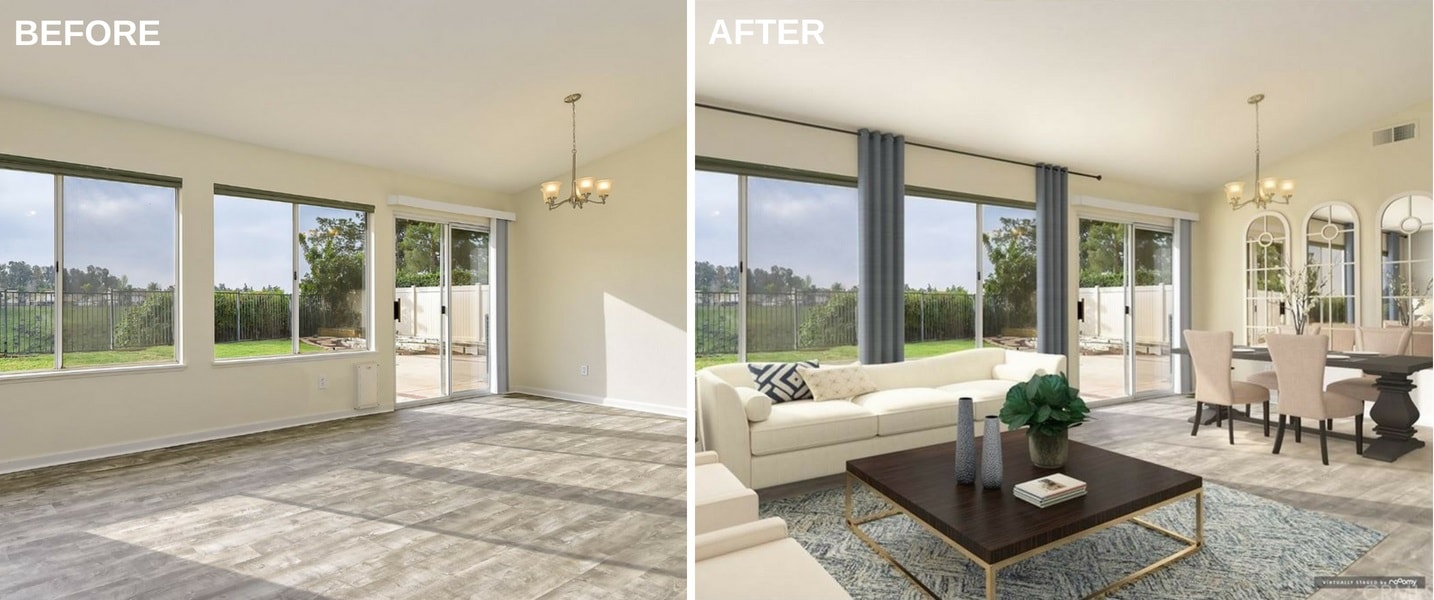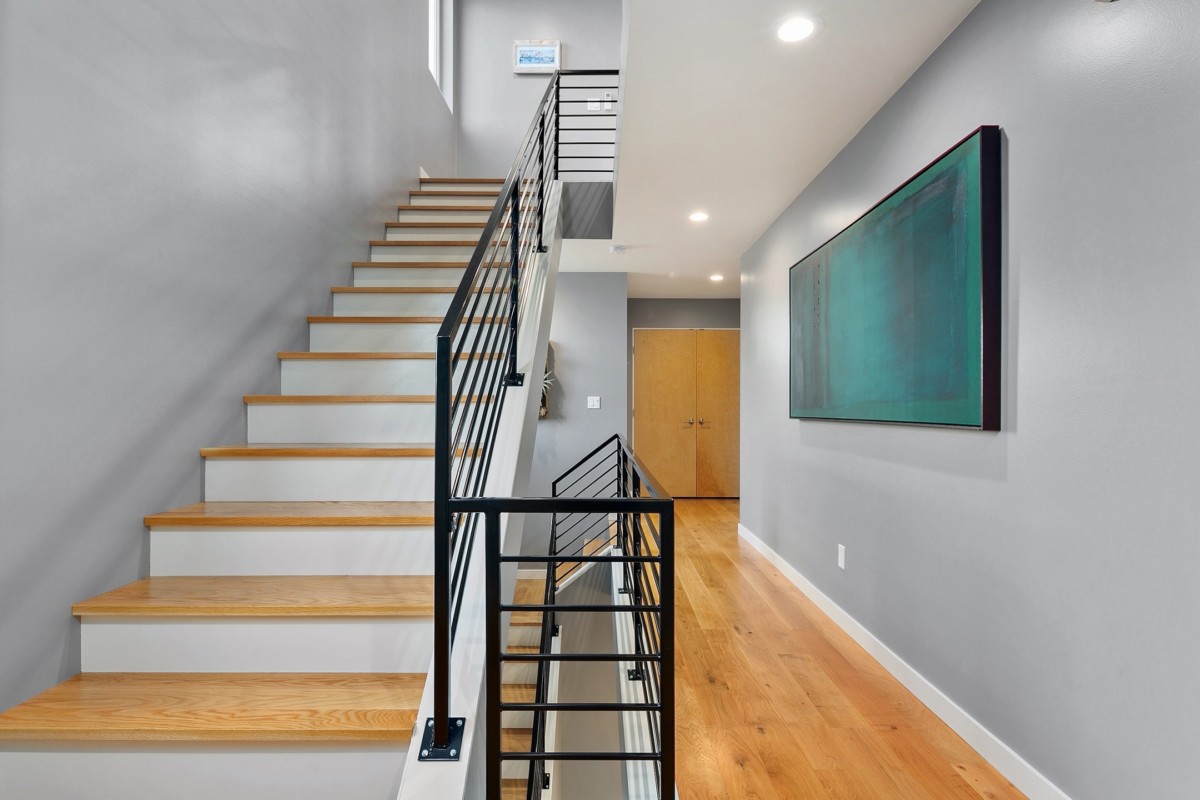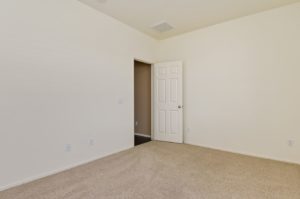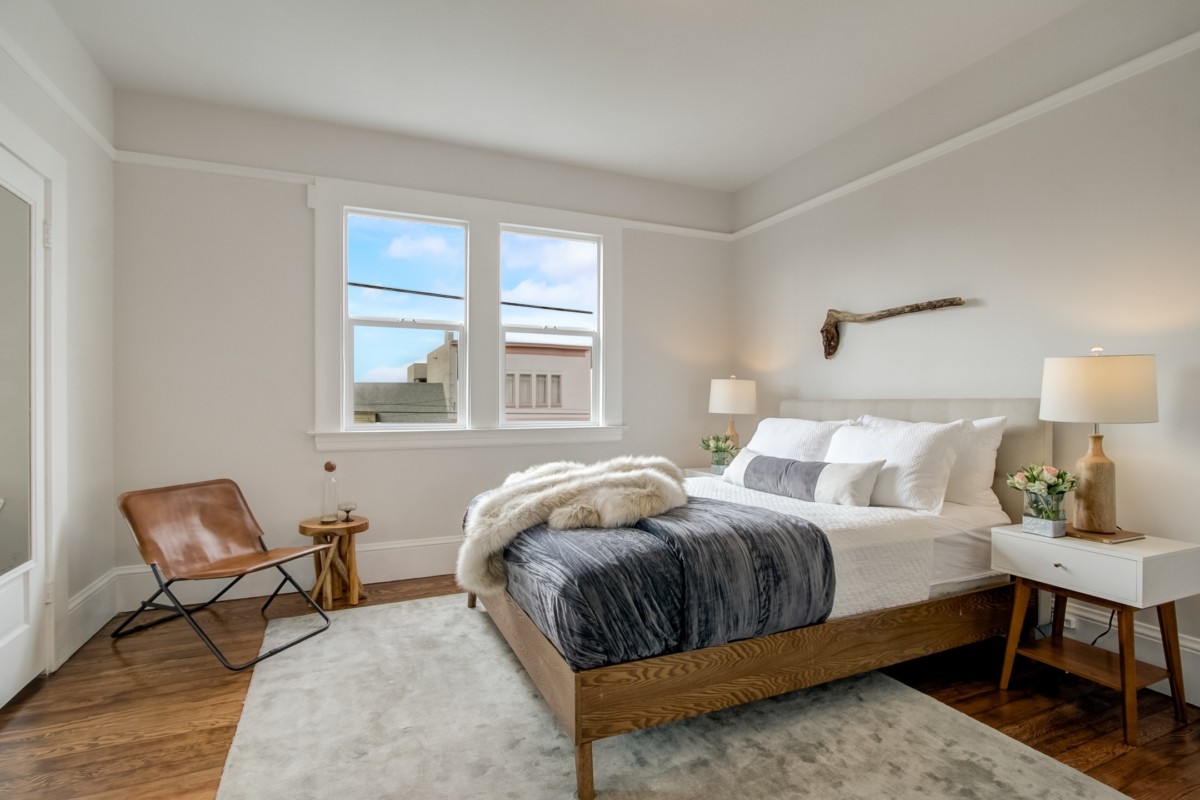Virtual Staging: An Innovative Way to Impress Buyers
In a virtual age, where you can tour homes online and purchase a home sight-unseen, why wouldn’t you consider virtual staging as a way to market your home to potential buyers? As more home sellers turn to virtual staging, you might be wondering, is virtual staging worth it? How does virtual staging compare to traditional staging? And how much does virtual staging cost? We’ll explain everything you need to know to help you determine whether virtual staging is the right alternative for you.

What is virtual staging?
Virtual staging, like traditional staging, is decorating a property to showcase its best features and qualities to make it more attractive to homebuyers. But as the name implies, virtual staging is done with a computer. There’s no real furniture, area rugs, potted plants, or other décor involved. Professional virtual stagers digitally insert decorative elements in high-resolution photos to show an empty room’s full potential.
Virtual staging vs. traditional staging
According to the National Association of Realtors®, 82 percent of buyers’ agents say that staging makes it easier for buyers to visualize themselves living in a home. As many as 38 percent of sellers’ agents say that they stage all their clients’ homes before listing. Since the benefits of staging can directly impact listing performance, virtual staging was developed to give the same benefits for home sellers looking for an alternative to traditional staging.
With that said, virtual staging may help sell a home faster and for more money – but only if it’s done right. You still need to hire a professional who knows how to take good listing photos and work with a reputable company with a great portfolio of completed work.
What homes is virtual staging best suited for?
Virtual staging won’t work for all homes, and in many cases, traditional staging may be a better choice. However, it can be a huge benefit if it’s done properly for the following types of homes:
- Vacant homes: it can be more cost-effective to have virtual staging than physically staging an empty home.
- Homes with outdated furniture: rather than having to rent new furniture, virtual staging can make a home with older furniture stand out.
- Properties with tenants: it can help when a homeowner has little control over the space’s appearance.
If you still occupy your home and your furnishings can be staged to make it appealing to potential buyers, whole-house virtual staging probably isn’t for you. However, you can still virtually stage some rooms if you and your agent think it’s the right strategy.

How much does virtual staging cost?
Virtual staging is usually a lot cheaper than the cost of staging a home the traditional way. Here’s a quick glimpse at the price difference between the two:
Virtual staging costs: somewhere between $39 and $199 per room, depending on the contractor you use, your location, and the amount of space that needs staging.
Traditional staging costs: anywhere from $500 to $600 per room, depending on the stager you use, how much furniture you need to rent, your location, and the number of rooms that need staging.
Price isn’t the only factor to take into consideration, though. Virtual and traditional staging have pros and cons that you’ll have to weigh, particularly if you’re trying to sell an empty house.
Pros and cons of virtual staging
Virtual staging can be an easy and beneficial alternative to traditional staging while still giving buyers a look at your home’s best features. However, it may not be the right choice for some home sellers. Let’s take a look at the pros and cons to help you decide:
Pros of virtual staging
- Showcase features: It can help you showcase an empty home’s best qualities.
- Cost-effective: Virtual staging can be more cost-effective than traditional staging, especially when staging a vacant home.
- Flexibility: When staging an empty home, virtual staging allows you to stage any number of rooms or multi-use rooms in different ways. For example, staging a spare bedroom as a home office.
- Convenient: With virtual staging, there’s no one in your home rearranging furniture or moving around your belongings.
- Fast: Virtual staging is much quicker than traditional staging and gives you the flexibility to decide how you want your home to look.
Cons of virtual staging
- Can become more expensive: If you opt for virtual staging and your home is filled with furniture, you’ll likely see costs increase. In this instance, you’ll need to remove furnishings to make space for photos.
- Occupied homes can be difficult: If you’re still living in the home, virtual staging can be trickier, unless you have previous empty listing photos that can be used.
- Furniture and décor only exist in the virtual space: Make sure the agents have photos in hand or access to the staged images for potential buyers to view once they’re touring your home in person.
Pros and cons of traditional staging
Traditional staging, which has been a successful tactic for decades, doesn’t always require a professional stager. However, it does require an eye for detail and the ability to create a space that appeals to the widest possible range of buyers. Let’s take a look at the pros and cons of traditional staging:
Pros of traditional staging
- Real-life perspective: Traditional staging gives buyers a real-life perspective when they tour the home, allowing them to see your home as theirs.
- Fully-furnished: Having real furniture in the space prevents buyers from having to tour an empty home.
- Highlight your space: Traditional staging can help make spaces appear larger and enable prospective buyers to gauge the size.
- Leaves an impression: Helps your home stand out in buyers’ memories after they leave
Cons of traditional staging
- Can be expensive: The longer your home is on the market, the longer you’ll keep incurring costs. Some stagers may require a minimum staging contract of three-months, even if your home sells in six weeks.
- Can be inconvenient: Traditional staging may require stagers to bring in additional furnishings or décor to stage the home. But if it’s not necessary for the space, they’ll still need to declutter and rearrange your home, which can be inconvenient if you’re still living there.
- May be unnecessary: Depending on how quickly homes are selling in your market, staging may not influence the price or sale of your home. However, you may still need staging in a seller’s market to create a move-in-ready experience for potential buyers.
Virtual staging before and after
To decide if virtual is the right option, it’s important to see how it can transform an empty space. Here are a few before and after photos so you can see the difference:








Common virtual staging mistakes
The biggest mistake a seller can make is hiring a virtual staging company that doesn’t produce good results. Virtually staged photos should be exceptionally realistic so that buyers won’t realize they’re computer-generated unless someone tells them. When deciding on virtual staging, make sure you avoid these mistakes:
- Misleading buyers: Failing to provide prospective buyers with photos of empty and staged rooms. Buyers may expect the home to look the same as its listing photos, so provide both.
- Adding too much décor: Choosing virtual staging that makes the home look worse, not better. Like traditional staging, you have to be careful not to overdo furniture and decorative elements in staged photos.
- Using virtual staging when it’s unnecessary: Replacing furnishings and decorative elements in photos when they’re perfectly fine to begin with can be a significant waste of time and money.
Can virtual staging help you sell your home?
Virtual staging can be a tremendous asset when you’re selling a vacant or occupied home or one that has outdated furnishings. It allows prospective buyers to view your home in its best light and not just as an empty space. Whether you opt for virtual or traditional staging, either choice may help sell your home faster and for more money.
Individual results may vary. This is not intended as a substitute for the services of a licensed real estate agent, or licensed and bonded home services professional or appraiser.
The post Virtual Staging: An Innovative Way to Impress Buyers appeared first on Redfin | Real Estate Tips for Home Buying, Selling & More.

